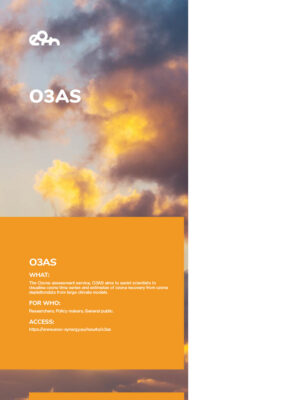Description of the Result
Identifying and monitoring the recovery of the stratospheric ozone layer is key in Climate and Environmental studies because the ozone layer plays an essential and important role for the protection from harmful UV radiation. The Ozone assessment service, O3AS aims to assist scientists to visualise ozone time series and estimates of ozone recovery from ozone depletion data from large climate models.
O3AS integrates the following services listed in the EOSC marketplace:
- EOSC OIDC providers, e.g. EGI Check-In: to access certain functionalities of the service.
- Infrastructure Manager: to deploy service components on EOSC cloud resources.
- EOSC cloud resources: to offer O3AS service for users in a timely manner.
Target audience/beneficiaries
Researchers in Climate and Environment domains; Educators, general public, i.e. anyone interested in the ozone assessment. O3AS produces relevant key metrics, which can also help policy makers to judge the effectiveness of measures implemented to protect the stratospheric ozone layer.
Added Value / Benefits
Stratospheric ozone protects life on Earth from harmful UV radiation. Uncontrolled CFC releases have eroded the ozone layer in the past. Thus the Montreal Protocol (MP) was established to protect the ozone layer. Ozone Assessments are part of the MP requirements to track the health of the ozone layer. Providing robust results of ozone projections allows impact studies to predict and mitigate potential damage. Ozone assessment is a time- and computing-consuming task with similar tasks reappearing periodically, such as large datasets analysis, dispersal of different model data, inconsistencies of reappearing analyses. The O3AS workflow includes novel analysis tools that access Climate Data Archives for monitoring stratospheric ozone and providing access to ozone time series from various climate models, by reducing large data sets, providing easily interpretable viewgraphs and an easy-to-use API/Web Api. O3as is flexible and can be extended to include visualisation of other climate data (atmospheric trace gases, temperature) as well as to present spatial data (latitude, longitude, height).
Use and Impact after EOSC Synergy
O3AS will be promoted and exploited by means of publications, presentations and conferences and personal contacts.

